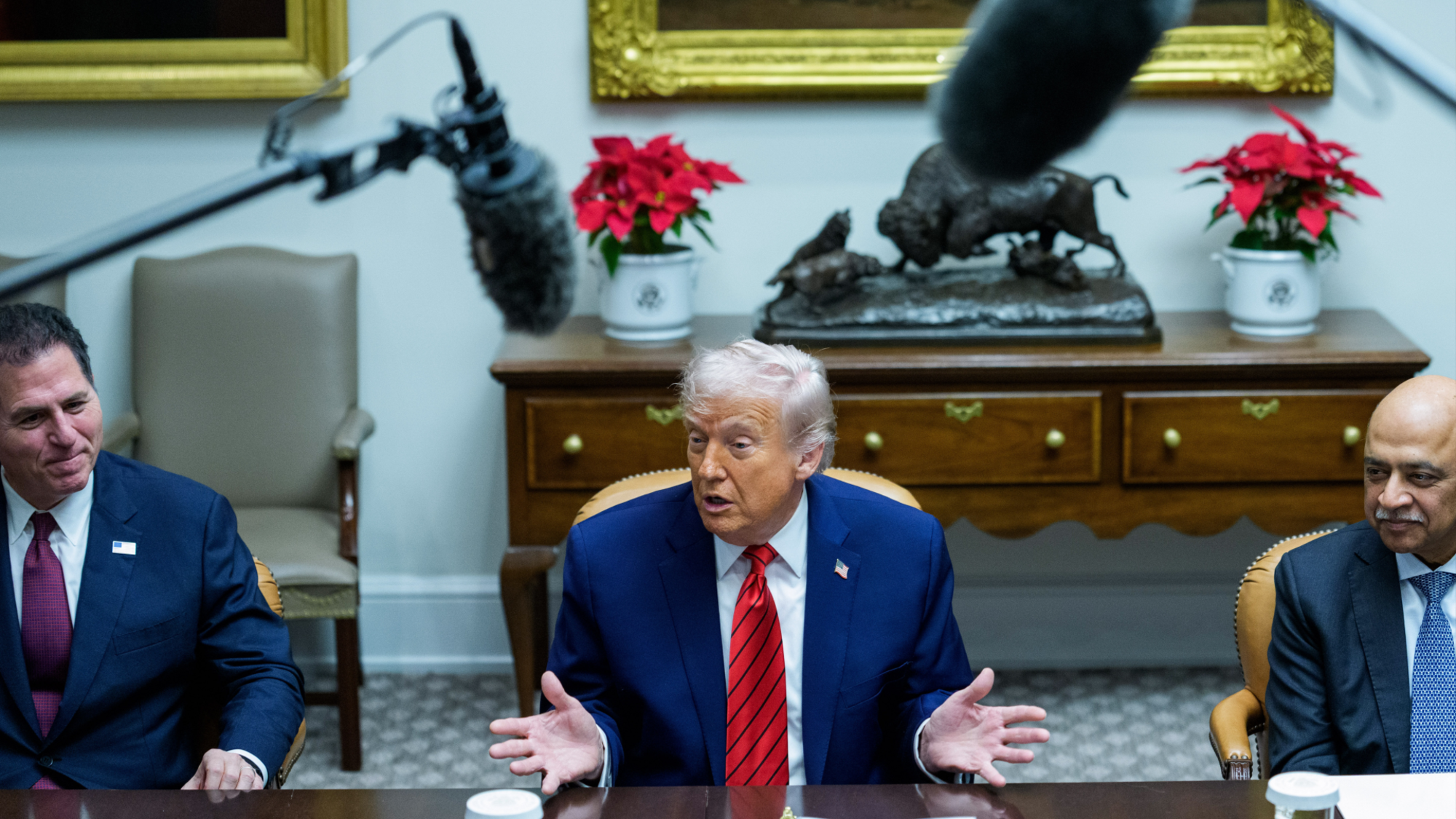Rebuilding at ground zero
The World Trade Center’s twin towers came down on Sept. 11, and on Sept. 12 Americans began dreaming of rebuilding them. Will the towers rise again?
What are the options?
There are three: Rebuild the towers as they were, replace them with more modest skyscrapers, or leave the site empty as a memorial. In the immediate aftermath of Sept. 11, numerous commentators, architects, and politicians insisted that the World Trade Center towers be rebuilt in their 110-story glory, as a statement of defiance. But in recent weeks, that view has given way to a more sober assessment. Many architects and urban planners have pointed out that the twin towers were impractically tall even before they became terrorists’ favorite target. Building safety features into buildings of that height is enormously expensive and difficult. And who would rent space on the 100th floor? “There would be a lot of companies that would be wary of putting their employees in a dangerous position again,” said Justin Stein, a New York real estate executive. The proposals now receiving serious consideration all feature shorter skyscrapers with a memorial park, shops, and apartments.
Who will make the choice?
The Week
Escape your echo chamber. Get the facts behind the news, plus analysis from multiple perspectives.

Sign up for The Week's Free Newsletters
From our morning news briefing to a weekly Good News Newsletter, get the best of The Week delivered directly to your inbox.
From our morning news briefing to a weekly Good News Newsletter, get the best of The Week delivered directly to your inbox.
Developer Larry Silverstein says the 99-year lease he signed earlier this year gives him the right to decide. He’s still paying rent of $116 million a year to the WTC’s owner, the Port Authority of New York and New Jersey. But most real estate experts say that the new buildings’ final design will not be in any one person’s hands. Politicians, bureaucrats, and family members of the more than 3,000 people killed will all have some influence.
Who will pay the bill?
Silverstein’s lease gives him that responsibility, but he’s hoping his insurers will cover the estimated $7 billion cost of replacing the towers. His insurance policy provides a maximum of $3.5 billion to cover his losses in a disaster. Silverstein argues the insurers owe him $3.5 billion times two, arguing that each airliner that hijackers crashed into the towers on Sept. 11 constituted a separate disaster. One company that insured the buildings, Swiss Re, has filed a lawsuit to fight Silverstein’s interpretation. Before any rebuilding takes place, the federal government will spend at least $20 billion just to clean up the site. Some officials warn that repairing everything in the area, including a smashed subway line, will cost twice that.
What are the landlord’s plans?
A free daily email with the biggest news stories of the day – and the best features from TheWeek.com
Silverstein wants to replace all 10 million square feet of lost office space with four 50-story buildings. Silverstein told the editors of the New York Daily News that he also wanted to include 500,000 square feet of shops, a performing arts center, a hotel, and a cluster of luxury condominiums. He would hope to open the structures one at a time, between 2006 and 2008.
Does the public agree?
A Harris Interactive poll found Americans were equally split among the three options. Families of September 11, an organization of people who lost relatives in the disaster, says it would be disrespectful to put any commercial buildings on the ruins. The group says that the land where the Trade Center once stood should be considered a hallowed graveyard for the victims buried in the rubble. “My mom is down there,” said Carie Lemack, of Cambridge, Mass.
Is there a precedent for a memorial?
Yes, in Oklahoma City. The Alfred P. Murrah Federal Building was torn down after Timothy McVeigh’s truck bomb blasted apart its facade and much of its interior. The site became a memorial to the 168 people who died in the 1995 bombing, and the federal offices opened in new locations. In London and Berlin, the battered remnants of a few buildings were preserved in remembrance of World War II. Hiroshima was rebuilt after the atomic blast, but a memorial park was created at the city’s heart in honor of those who died. In the center of the park sits the shell of a building gutted by the blast.
So why rebuild at all?
Business and political leaders say the World Trade Center site is too valuable to be left empty. The offices lost on Sept. 11 accounted for 10 percent of the rental office space of Lower Manhattan, home of the city’s financial district. But there’s no doubt that a substantial memorial will certainly be part of whatever complex rises from the ashes of the twin towers. For possible use in the memorial, New York City is keeping a remnant of the Trade Center’s distinctive facade. It’s twisted and charred, and it’s seven stories tall. “Ground zero must and will have a real memorial,” Silverstein said, “one that will honor and sanctify the memory of the thousands who perished in these catastrophic attacks.”
The towers of light
-
 Denmark scraps letters and its iconic red postboxes
Denmark scraps letters and its iconic red postboxesUnder the Radar Danish posties say ‘farvel’ to 400 years of tradition but can Royal Mail weather the storm?
-
 What role will Trump play in the battle over Warner Bros. Discovery?
What role will Trump play in the battle over Warner Bros. Discovery?Today’s Big Question Netflix and Paramount fight for the president’s approval
-
 ‘The menu’s other highlights smack of the surreal’
‘The menu’s other highlights smack of the surreal’Instant Opinion Opinion, comment and editorials of the day